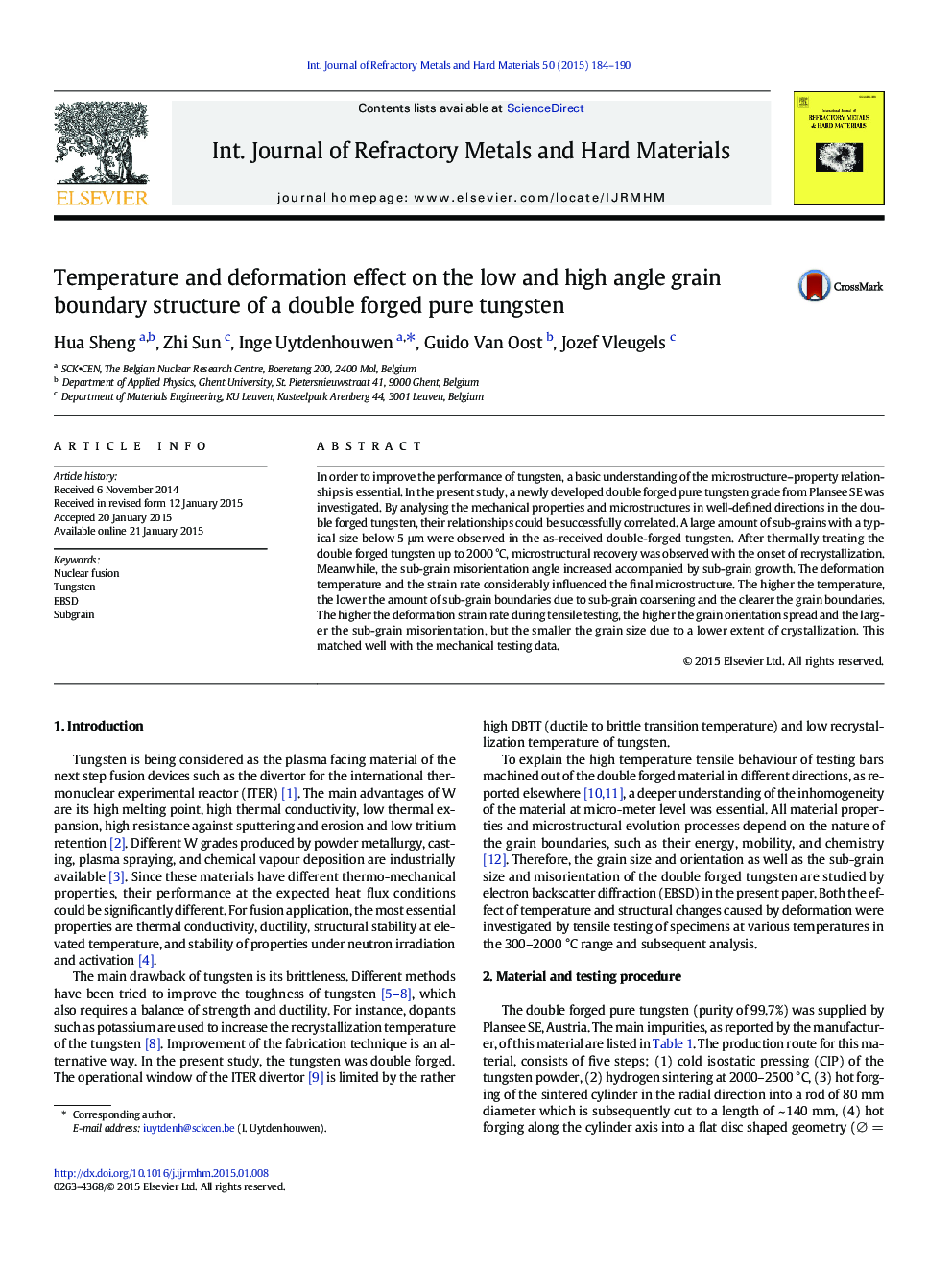| Article ID | Journal | Published Year | Pages | File Type |
|---|---|---|---|---|
| 1602780 | International Journal of Refractory Metals and Hard Materials | 2015 | 7 Pages |
•Double forged W consists out of a large amount of sub-grains with size below 5 μm.•Recovery occurred when heat treating up to 2000 °C.•Sub-grain misorientation increases when sub-grains grow.•Deformation strain rate increases the grain orientation spread and sub-grain misorientation.
In order to improve the performance of tungsten, a basic understanding of the microstructure–property relationships is essential. In the present study, a newly developed double forged pure tungsten grade from Plansee SE was investigated. By analysing the mechanical properties and microstructures in well-defined directions in the double forged tungsten, their relationships could be successfully correlated. A large amount of sub-grains with a typical size below 5 μm were observed in the as-received double-forged tungsten. After thermally treating the double forged tungsten up to 2000 °C, microstructural recovery was observed with the onset of recrystallization. Meanwhile, the sub-grain misorientation angle increased accompanied by sub-grain growth. The deformation temperature and the strain rate considerably influenced the final microstructure. The higher the temperature, the lower the amount of sub-grain boundaries due to sub-grain coarsening and the clearer the grain boundaries. The higher the deformation strain rate during tensile testing, the higher the grain orientation spread and the larger the sub-grain misorientation, but the smaller the grain size due to a lower extent of crystallization. This matched well with the mechanical testing data.
